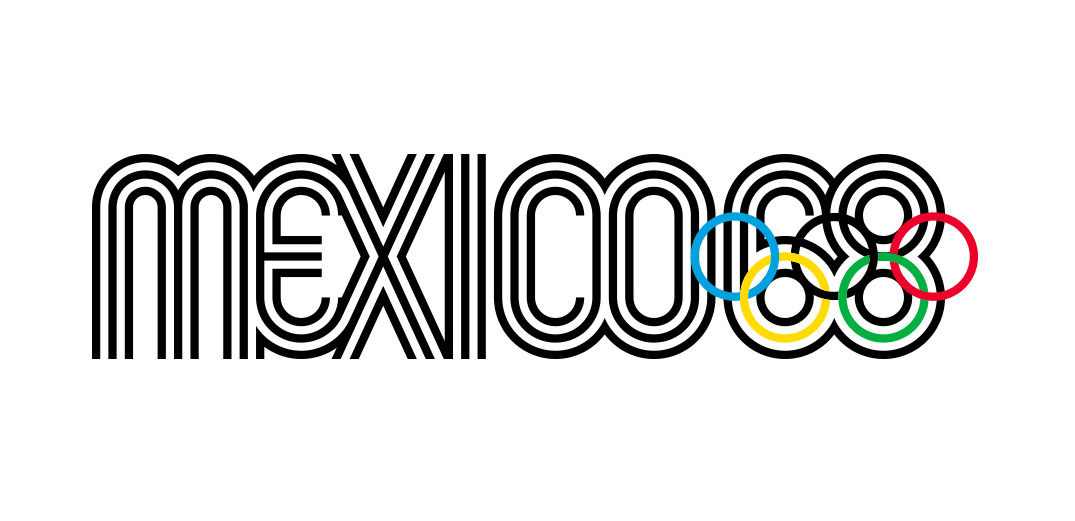Big question: what do you think about portfolio platforms?
Sites such as Behance, Carbonmade and Cargo offer great virtual spaces for creatives to display their work – but is it wrong to use an ‘off the rack’ platform? We ask our panel of experts

Dan Mall
www.danielmall.com
Those platforms are great as quick portfolio options. If you’ve only got an hour to put some work online in a presentable format, these are great options.
However, as someone who would look at 50-100 portfolios a week, they all start to blend together. If you’re really looking to stand out, a custom portfolio that accentuates your strengths – and hides your weaknesses – is the way to go.
Remember: your portfolio is an example of your work too.
Dan is art director at Big Spaceship

Aral Balkan
aralbalkan.com
Using a portfolio platform is perfectly fine if you’re a designer … as long as you’re not a web designer (or developer). If you are, then your portfolio site is, itself, part of your portfolio and a chance to show off your skills and set yourself apart. Using a generic portfolio site will, well, make you look generic.
Get the Creative Bloq Newsletter
Daily design news, reviews, how-tos and more, as picked by the editors.
Aral is a designer, developer, professional speaker, teacher, and author of the Feathers iPhone app

Trent Walton
paravelinc.com
I think they’re a great resource, though if you’re a front-end developer your personal site is an opportunity to show what you’re capable of. On the web, your site can be just as much of a portfolio piece as the work it showcases.
Trent is founder of Paravel

Nick Francis
www.project83.com
I think they’re absolutely fantastic! It’s a great way for creative people to have a beautiful web presence without having to understand HTML/CSS. If and when they have the budget/desire for something more unique and personalised, they can build a site. But until then, these apps are a really great fit.
Nick creates websites at Project83

Nathan Smith
sonspring.com
I think sites such as Behance, Cargo, and Carbonmade are great for graphic designers who need a place to put a portfolio of amazing work, but just do not have the time and/or skill to craft a solid site for themselves. I also think they work as a good stop-gap for web designers who are looking to get their work noticed and land their first job, but don’t have the time or resources to get their own domain name and worry about hosting.
However, I think in the long-term, if you’re a serious web designer or developer, you ought to have your own niche carved out on the web. Ultimately, if you’re using a service, you are beholden to their up-time, terms of use, and design whims. I want to focus on those last two points. At any time, any service on the internet has the right to change their terms and enforce a fee where before something might have been free. Or, the layout you love for your portfolio might one day change (for the better or worse). I would think designers would want more control over that aspect.
Nathan created the 960 Grid System

Chris Coyier
chriscoyier.net
For photographers, painters, ceramic artists, pure digital artists, printmakers, woodworkers ... amazing. Any one of them is a great choice. They don’t have to waste much time. They get a beautiful looking portfolio.
For web designers … kinda embarrassing. An online portfolio is the chance (maybe the only one they get) to display how much they care and detail they put into their craft. Using a prebuilt solution is like a painter who doesn’t mix paints or a woodworker who only uses blueprints from Home Depot. A portfolio is half your portfolio as a web designer.
Chris is a web designer working at Wufoo

Tom Lane
gingermonkeydesign.com
The right portfolio platforms, used in a considered and strategic way, can get your work in front of the right people. Rather than seeing them as another place to just put your work on the web, try to understand the initiatives each platform runs so you can use them to your advantage.
Behance, for instance, curates the top creative work posted to their members profiles and has a Gallery section that gets an incredible amount of hits each day. Personally, I find getting my work selected and seen by their traffic always results in a good stream of commissions, from all across the globe. To be select, it’s not usually the case of just putting up a couple of nice shots of a finished piece. It’s more about telling a story through the work, some process, background and development.
If you aim to create each portfolio project rich with content, with a good thumbnail image and really show your mustard, you’ll be giving yourself the best shot of making portfolio platforms work really well for you.
Tom is a designer and illustrator

Rob Mills
bluegg.co.uk
I think portfolio sites are a useful resource for people to share their work for increased exposure to an audience that they may not otherwise be able to engage with. Sure there’s a risk of plagiarism but you choose what to share and feedback/discussion among the community is often valuable.
Rob is studio manager for creative agency Bluegg

Elliot Jay Stocks
elliotjaystocks.com
As much as I respect custom-made portfolios and – as a designer – have a desire to create them myself, I think sites like Cargo Collective are wonderful, because they allow people to get their work online without having to write any code. That’s great for non-webby people like illustrators or print designers. And if you can write code, you can heavily customise the templates, so it’s the best of both worlds.
Personally, I’ve never been interested in the ‘social’ aspect that communities like Behance offer, but they’re undoubtedly great tools. The only caveat is that I’d be wary of employing a web designer if they only had one of these portfolios that didn’t require any code-writing. Plus, designing your own goes a long way towards speaking about yourself and your work.
Elliot is a designer and illustrator and the founder of typography magazine 8 Faces

Christopher Schmitt
christopherschmitt.com
Use all the portfolio sites you can use. Put your work out there in as many places as you can. Don’t just keep your best work to yourself on one site, get your work on your own dot-com, but also on Dribbble, Forrst, Github, and so on. And once you have something to show, be sure to blog it too, which should be connecting to an RSS-to-email newsletter service like the one provided by MailChimp. The more lines you have in the pond, the more likelihood you will catch a fish.
Christopher is chief creative officer for Heatvision

Shane Mielke
shanemielke.com
Portfolio platforms like these are simple and effective ways for people to showcase their work online. If your work gets featured, there are huge opportunities for recognition in the community.
Unfortunately, not everyone gets featured and template services like these do have drawbacks that people should consider. A huge downside to these networks is that your work is hosted among peers and companies that you might be in competition with for work. Imagine sending a client a link to your work on a hosted portfolio platform and instead of seeing just your projects they start clicking the people in your own network or the featured pages and find someone better or cheaper than you to do their project. Unless your work is better than everyone else around you, don’t rely upon them as your only portfolio.
In addition, I think these sites help make people lazy to the point of not pushing their own portfolio sites as the initial point of contact with the internet. For most of us our client work doesn’t really show our true personalities. As templates, neither do these hosted sites. So we should all have individual portfolios that allow us to visually and verbally separate ourselves from everyone else and tell the whole story of who we are. As the popularity of these sites increase many people have forgotten this and are getting lost in the crowd.
Shane is designer and creative director at 2Advanced

Jonathan Smiley
zurb.com
For creative professionals like photographers, graphic artists or people who work in print, services like Carbonmade are a nice option – solid presentation without spending a lot of money on a custom site. For web designers I’m not sure I see the value.
If you’re presenting your work for purposes of employment, using a service just says you can’t be bothered to make your own site (not to mention that templates won’t communicate your style or skills like a site you made would). And if you’re presenting your work through another service while working with a group or agency then is it just an ego thing? Seems unnecessary.
Jonathan Smiley is design lead at ZURB

Melissa Bennett
welove72.com
These platforms are an excellent resource for our industry and design community. They give creatives a voice and allow brilliant work to surface and shine for everyone to see.
Designers no longer have to wait for a Willy Wonka style invitation to allow them to showcase their work. They can choose from a wide range of platforms with varying themes to display new work and get industry critiques and feedback; they also help you keep your portfolio of work up-to-date and organised, allowing you to cultivate a good, solid folio of your best pieces.
I think the ability to create networks and circles of fellow creatives is a great added bonus to online portfolios. It allows freelancers to collaborate with like-minded people and build up a network of contacts.
Graduates can really benefit from these services as well. Getting your foot in the door can be challenging. Having your work accessible for a group of creatives to see, appreciate and comment on is priceless.
Behance is a platform we use at We Love to let the online community see what we are up to as an agency. It can also be a great way to scout rising new talent.
Instead of thinking of them as ‘just another account that needs to be kept up-to-date’, make the most of them! If optimised correctly, and with very little upkeep, these online platforms can act as the perfect marketing tool for you or your agency.
Melissa Bennett is copywriter for We Love...

Jonathan Andrew
welove72.com
In an industry with the constant pressure of fast approaching deadlines, it’s often very difficult to find the time and ‘headspace’ to design and build your own personal portfolio site – even if you do have the time, you might not have the necessary skills to execute it. The likes of Behance and Carbonmade offer a fantastic solution to this. They provide an easily customisable and manageable framework that gives those with work to show a quick and easy platform on which to do so. For freelancers and enthusiasts looking for work, content is key. It may be desirable to have your own site that conveys your own personality, but potential employers will ultimately only be interested in looking at your work and what you can offer, and Behance and Carbonmade showcase it in a very simple, yet effective fashion.
Jonathan Andrew is tech lead for We Love...

Thank you for reading 5 articles this month* Join now for unlimited access
Enjoy your first month for just £1 / $1 / €1
*Read 5 free articles per month without a subscription

Join now for unlimited access
Try first month for just £1 / $1 / €1

The Creative Bloq team is made up of a group of art and design enthusiasts, and has changed and evolved since Creative Bloq began back in 2012. The current website team consists of eight full-time members of staff: Editor Georgia Coggan, Deputy Editor Rosie Hilder, Ecommerce Editor Beren Neale, Senior News Editor Daniel Piper, Editor, Digital Art and 3D Ian Dean, Tech Reviews Editor Erlingur Einarsson, Ecommerce Writer Beth Nicholls and Staff Writer Natalie Fear, as well as a roster of freelancers from around the world. The ImagineFX magazine team also pitch in, ensuring that content from leading digital art publication ImagineFX is represented on Creative Bloq.
